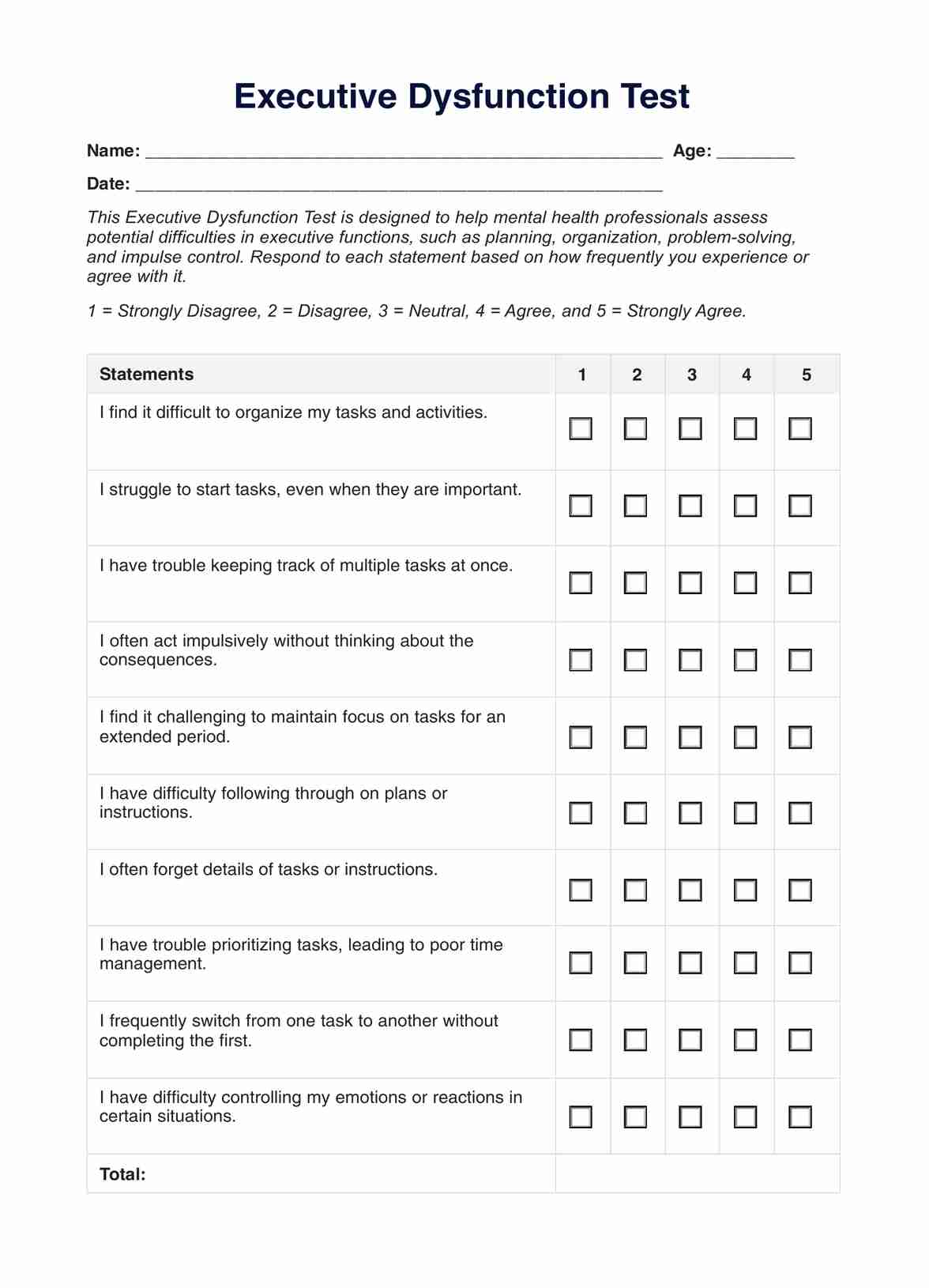Mental health professionals use assessments like the Executive Dysfunction Test to test for executive dysfunction, which evaluates crucial executive functions such as working memory, cognitive flexibility, and inhibition control.

Executive Dysfunction Test
Explore our Executive Dysfunction Test Template, designed for mental health professionals to assess and address executive functioning challenges in clients.
Use Template
Executive Dysfunction Test Template
Commonly asked questions
Various factors, including neurological disorders like ADHD, brain injuries, mental health conditions, and developmental disorders, can cause poor executive functioning.
Breaking out of executive dysfunction involves implementing strategies to improve executive functioning skills, such as using planners, setting reminders, breaking tasks into smaller steps, and seeking support from mental health professionals.
EHR and practice management software
Get started for free
*No credit card required
Free
$0/usd
Unlimited clients
Telehealth
1GB of storage
Client portal text
Automated billing and online payments











